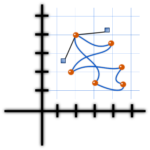
Factorial Design
Factorial design is a powerful and widely used experimental design in biological research. It allows researchers to investigate the effects of multiple independent variables simultaneously and examine their interactions. This design is particularly useful when studying complex phenomena that involve multiple factors that may interact with each other.
Basic Principles and Research Hypotheses
In factorial design, researchers manipulate two or more independent variables, also known as factors, to examine their individual and combined effects on the dependent variable. The independent variables can be categorical or continuous, and they are typically manipulated at different levels or values. The dependent variable is the outcome or response variable that is measured or observed.
The basic principle of factorial design is to systematically vary the levels of each independent variable and observe the resulting effects on the dependent variable. By manipulating multiple factors, researchers can investigate how each factor independently influences the dependent variable and whether there are interactions between the factors.
Research hypotheses in factorial design are formulated to test the main effects of each independent variable and the interactions between them. Main effects refer to the individual effects of each factor on the dependent variable, while interactions refer to the combined effects of the factors that are greater or different from the sum of their individual effects.
Advantages of Factorial Design
Factorial design offers several advantages over other experimental designs. Firstly, it allows researchers to examine the effects of multiple factors simultaneously, providing a more comprehensive understanding of the research question. This design also enables the investigation of interactions between factors, which can reveal complex relationships that may not be apparent in single-factor designs.
Furthermore, factorial design allows for efficient use of resources and participants. By combining multiple factors in a single experiment, researchers can reduce the number of experiments needed to investigate each factor individually. This not only saves time and resources but also minimizes potential confounding variables that may arise from conducting separate experiments.
Types of Factorial Design
There are different types of factorial design, depending on the number of factors and levels involved. The most common types include 2×2 factorial design, 2×3 factorial design, and 3×3 factorial design, where the numbers represent the number of levels for each factor.
In a 2×2 factorial design, there are two factors, each with two levels. This design allows researchers to examine the main effects of each factor and the interaction between them. For example, in a study investigating the effects of two different treatments (factor A) and two different dosages (factor B) on a specific outcome, a 2×2 factorial design can be used to examine the main effects of treatment and dosage, as well as their interaction.
A 2×3 factorial design involves two factors, one with two levels and the other with three levels. This design allows for the investigation of the main effects of each factor, the interaction between them, and the main effects within each level of the second factor. This design is useful when studying the effects of two factors, where one factor has more levels than the other.
Similarly, a 3×3 factorial design involves three factors, each with three levels. This design allows for the examination of the main effects of each factor, the interactions between them, and the main effects within each level of the other factors. This design is suitable for studying the effects of three factors, where each factor has the same number of levels.
Analysis of Factorial Design
The analysis of factorial design involves examining the main effects and interactions using statistical methods. Analysis of variance (ANOVA) is commonly used to determine the significance of the main effects and interactions. Post-hoc tests, such as Tukey’s test or Bonferroni correction, can be conducted to compare specific groups or levels within the factors.
Interpreting the results of factorial design requires careful consideration of the main effects and interactions. Main effects indicate the overall influence of each factor on the dependent variable, while interactions reveal whether the effects of one factor depend on the levels of another factor. Researchers should pay attention to both main effects and interactions to fully understand the relationships between the factors and the dependent variable.
Factorial design is a valuable tool in biological research, allowing researchers to investigate the effects of multiple factors and their interactions on the dependent variable. By systematically manipulating and varying the levels of each factor, researchers can gain a deeper understanding of complex phenomena. Factorial design offers advantages in terms of efficiency, resource utilization, and the ability to examine interactions. Proper analysis and interpretation of factorial design results are crucial for drawing meaningful conclusions and advancing scientific knowledge.
